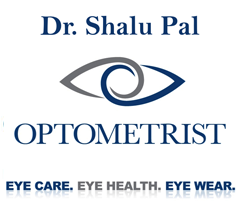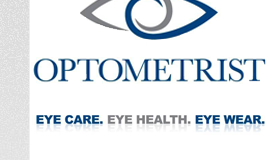Contents |
Anisocoria: Unequal Pupil Size
Normally, the pupils of the eyes are equal in size, are both round in shape and both react quickly and equally to light and any change of focus. Anisocoria is the medical term that simply means the pupils are not equal. The pupil also contracts when the eye changes focus from far away to close up.
The pupil is not actually a structure, but is simply a little window in the center of the colored part of the eye, the iris. The iris muscles control the size of the pupil, making it larger in dim light and smaller when the light is bright.
Normal pupil size in everyday room illumination is about three to five millimeters in diameter. In bright daylight outdoors, the pupils should contract to two millimeters or less, while they may dilate in a dim-lit restaurant to six or seven millimeters. Pupil dilating drops, used routinely to give eyecare practitioners a better look into the back of the eye, may cause the pupils to dilate to eight millimeters or more, which is why you need to use dark sunglasses afterwards.
An eyecare practitioner will usually check the size and shape of the pupils during the early part of a comprehensive vision examination, using either a penlight (see figure 1) in normal room illumination, or with an instrument called a direct ophthalmoscope in a darkened room.
It is not uncommon for people to have small observable differences in pupil size from birth; this would be like having one foot slightly larger than the other. This is called essential anisocoria, and is not a matter for concern at all, just something to be noted for future reference if necessary, particularly if they are different by more than two millimeters or so.
In other circumstances, a difference in pupil size might be an indicator of certain ocular conditions, neurological disease or a sign of brain injury in the case of head trauma. Concussion injuries to the brain are one cause of such differences, for instance.
Uveitis
In some instances, uveitis (also known as iridocyclitis or iritis) occurs because of a systemic neurological condition, such as rheumatoid arthritis, ankylosing spondylitis, tuberculosis or collagen vascular diseases like lupus.
In a significant number of cases, the exact cause of uveitis cannot be determined. The symptoms of uveitis include eye pain and redness with light sensitivity and nausea. Signs of this sight-threatening inflammation include small, fixed pupils and rapidly increased intraocular pressure due to angle-closure glaucoma
Eye Injury and Concussion
One of the most common causes of temporary anisocoria is blunt-force trauma to the head, which can occur as the result of sports-related injuries like those that can happen in American football or rugby, or accidents such as those that may occur in automobile crashes or other violent events.
Concussion of the brain may cause unequal pupils if the injury affects certain areas of the brain. Additionally, when the skull comes to a sudden stop, the brain can not only be injured on the side that has been impacted, but on the opposite side as well, as the brain bounces back. This is known as coup-contrecoup phenomenon. The eye itself can be injured in a similar way by the movement of the vitreous body.
Concussion is dangerous because it can cause bruising of the brain tissue and associated swelling. (Recent research has shown that re-injury to the brain before an earlier concussion can heal is a factor in even more serious damage. This particular are is cause for concern, especially in younger people like high school football players. Any head injury should be reason to sideline a player until the brain has a chance to heal itself after a concussion.)
Many people think a black eye is relatively minor, but anyone with an injury to the eye or face that causes this should be evaluated by an eyecare practitioner and/or an emergency physician using x-rays or a CAT-scan to evaluate voluntary eye movements and rule out damage to the bones surrounding the eye orbits.
The bones in this area are relatively thin and can break fairly easily; a blow to the eye area can push the eyeball back into the space behind it, compressing the muscle tissue and fat filling the orbit and causing these fragile bones of the orbit to fracture. The muscles that control eye movements can become trapped within the break and keep the eye from moving as it normally would, resulting in double vision.
See your eyecare practitioner if you notice any size difference in the pupils. Most of the time, there is no cause for concern and you can safely wait for an appointment, unless you are experiencing pain or unusual light sensitivity, or have experienced head trauma.






